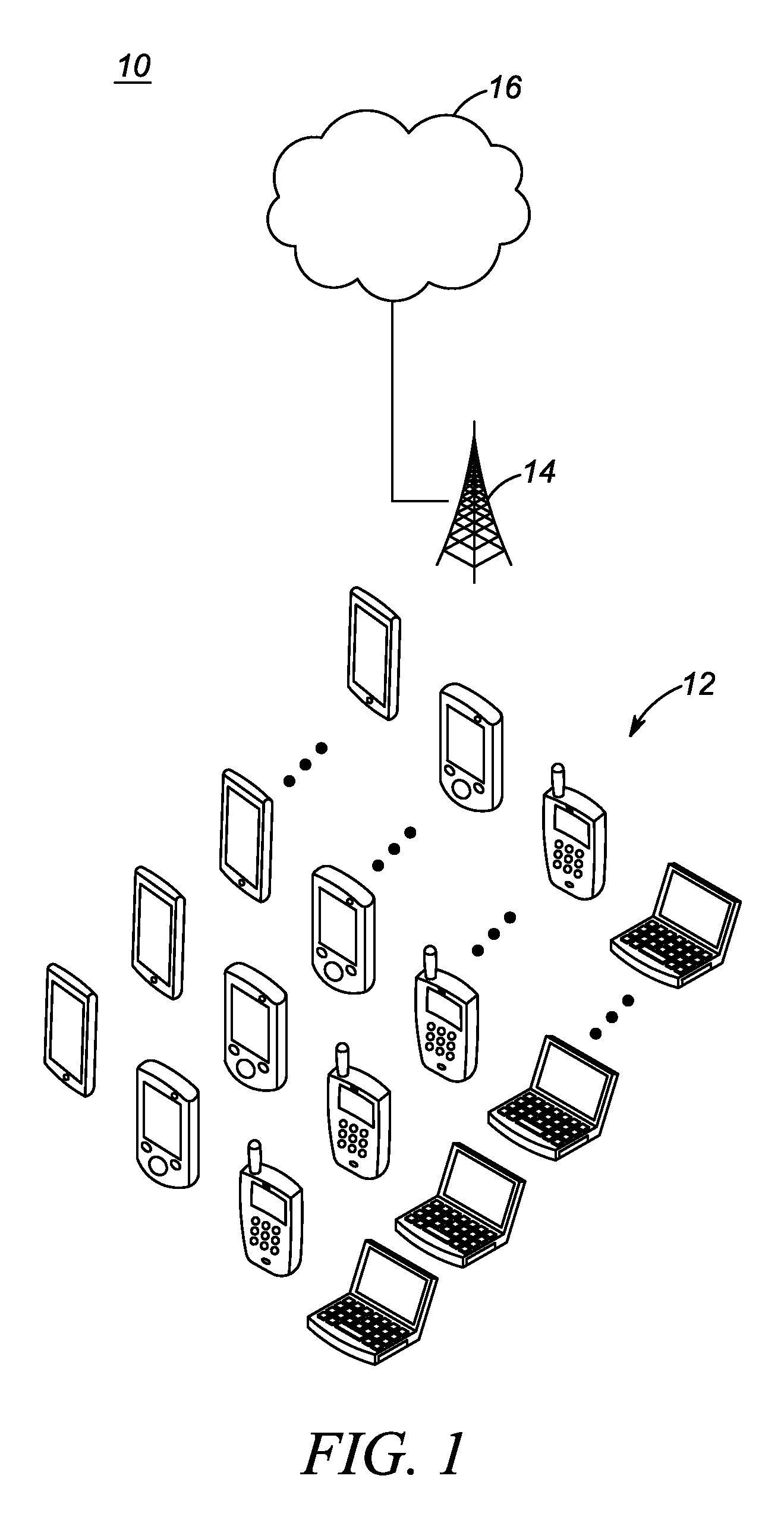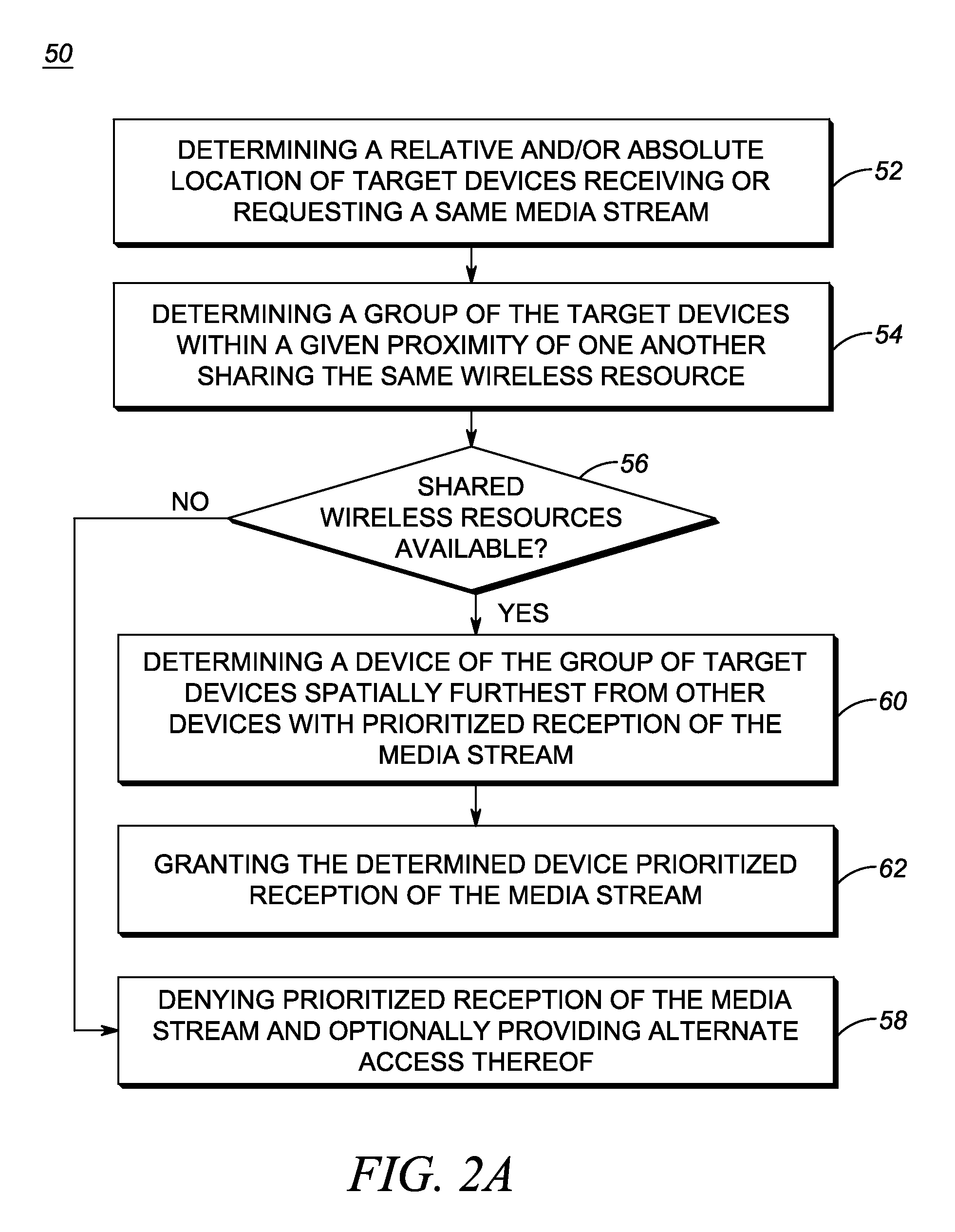Spatial quality of service prioritization algorithm in wireless networks
a service prioritization and wireless network technology, applied in the direction of location information based services, network traffic/resource management, broadcast service distribution, etc., can solve the problems of insufficient bandwidth to deliver video telecast to each user, poor experience for all users in these situations, and ineffective one-dimensional prioritization rules
- Summary
- Abstract
- Description
- Claims
- Application Information
AI Technical Summary
Benefits of technology
Problems solved by technology
Method used
Image
Examples
Embodiment Construction
[0014]In an exemplary embodiment, a spatial Quality of Service (QoS) method in a wireless network includes determining a relative or absolute location of target devices receiving or requesting a same media stream; determining a group of the target devices within a given proximity of one another utilizing resources from the same wireless access network; for each target device in the group while the resources remain in the wireless network: determining a target device based on relative spatial distance to other target devices in the group with prioritized reception of the media stream; and granting the determined target device prioritized reception of the media stream.
[0015]In another exemplary embodiment, a system implementing spatial Quality of Service (QoS) prioritization in a wireless network includes an interface communicatively coupled to a wireless access device; a processor; and memory storing instructions that, when executed, cause the processor to: determine a relative or ab...
PUM
 Login to View More
Login to View More Abstract
Description
Claims
Application Information
 Login to View More
Login to View More - R&D
- Intellectual Property
- Life Sciences
- Materials
- Tech Scout
- Unparalleled Data Quality
- Higher Quality Content
- 60% Fewer Hallucinations
Browse by: Latest US Patents, China's latest patents, Technical Efficacy Thesaurus, Application Domain, Technology Topic, Popular Technical Reports.
© 2025 PatSnap. All rights reserved.Legal|Privacy policy|Modern Slavery Act Transparency Statement|Sitemap|About US| Contact US: help@patsnap.com



